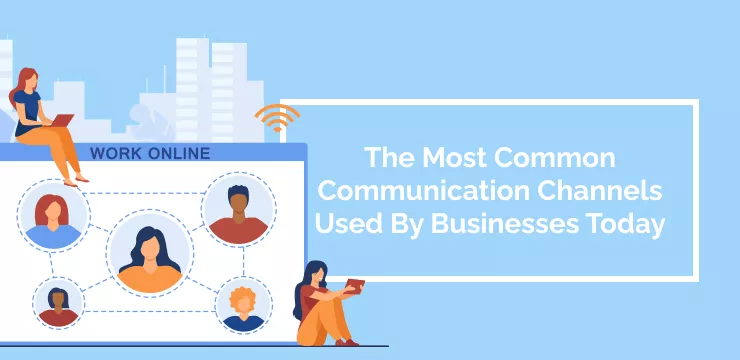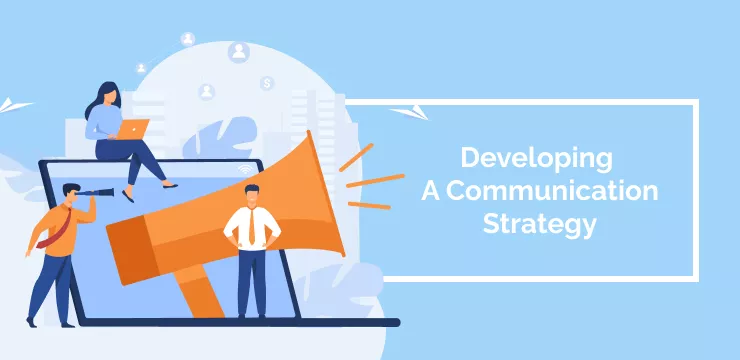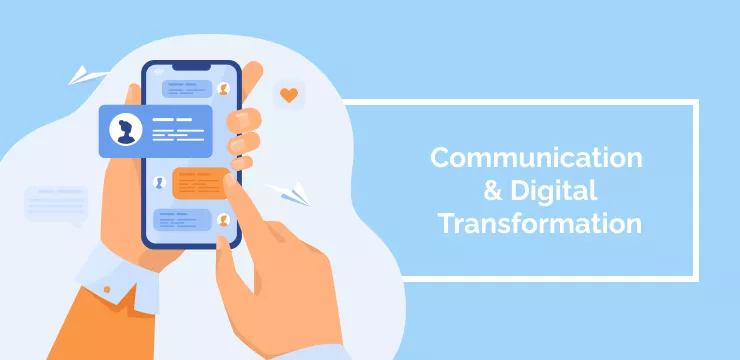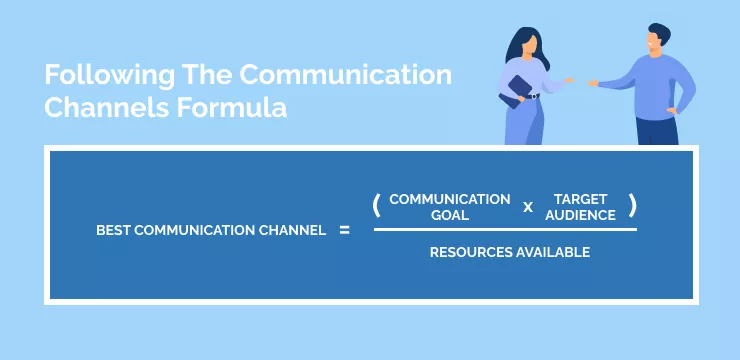Communication Channels In The Digital Age: Choosing The Best Approach
A new Mckinsey survey has found the COVID-19 pandemic has driven rapid adoption of digital channels across countries and industries. Still, digital’s growth has plateaued in the past six months and may begin to slip back once the pandemic eases—even as total digital adoption stays well above pre-pandemic levels.
That being said, many different communication channels are available for businesses nowadays, each with its own advantages and disadvantages. It’s important to remember that the best communication channel for a business will depend on the specific needs of that business and thus warrants a thorough investigation.
When choosing the right communication channel for your business, it’s wise to consider which types of communication will best support your organizational needs. This could include the type of communication (e.g., face-to-face communication or written communication), the conduct of communication (e.g., formal or informal), the audience being reached (e.g., customers or employees), and the business goals that need to be achieved (e.g., sales or branding).
What Are Communication Channels?
A communication channel is any medium that can be used to communicate a message. The term “channel” can refer to different types of media, including print (e.g., newspapers, magazines), broadcast (e.g., television, radio), and digital (e.g., email, social media, websites).
The term can also refer to the specific channels within each medium. For example, a television channel refers to the physical space on the cable or satellite lineup, while a digital channel can refer to a specific website or social media platform.
The Most Common Communication Channels Used By Businesses Today:

We’ve outlined some of the communication channels most commonly used by businesses today, along with their advantages and disadvantages.
Mục lục bài viết
Email is a ubiquitous written communication channel used by businesses because it is fast, cheap, and easy to use. However, email can be less personal than other communication channels (e.g., verbal communication or face-to-face communication) and is more likely to be ignored or deleted.
Email in the digital age has become one of the most, if not the most, effective communication channels used globally. A big part of the reason for this digital innovation is that email communication is quite effective in several different scenarios, especially when compared to more traditional communication channels such as verbal communication (e.g., phone calls or face-to-face meetings).
Advantages of Email:
- Asynchronous Communication. Meaning that the sender and receiver do not need to be available at the same time to communicate. This can be a big advantage when trying to coordinate communication between people in different time zones or with different schedules and helps to create a more digitally resilient business model.
- Cheap and easy to use. Most business communications already employ the appropriate communication channels (e.g., an email or video conferencing system) set up, and many free or low-cost email services are available.
- More efficient than other communication channels because it allows for batching of communication. That is, a sender can compose one email and send it to multiple recipients rather than having to compose a separate communication for each individual.
Disadvantages of Email:
- In the context of written versus verbal communication, email is less time-sensitive than other channels, such as face-to-face conversation or even a phone call. This serves as an obstacle for businesses that rely on real-time communication channels to maintain operational efficiency (e.g., sending critical correspondence or a sensitive or emotional message).
- Fragile Communication. An email can easily be ignored or deleted; many people do not check their email inboxes frequently enough to receive timely correspondence. Businesses that deploy secondary forms of internal communication systems as an alternative to written communication channels display business agility. Sole reliance on written communications can lead to instances of redundant and expired correspondence. This is why choosing proper communication channels is pivotal for wider business success.
Social media
Social media platforms like Facebook, Twitter, and LinkedIn can be excellent business communication channels. They allow businesses to reach a large audience quickly and easily. However, social media can also be very time-consuming, and measuring the results of communication campaigns can be difficult, especially if you have cross-functional teams.
Social media in the digital age has become one of the most commonly used communication channels, especially among younger generations.
Advantages of Social Media:
- Ability to reach a large audience quickly and easily.
- Allows for two-way communication. Businesses can send messages to their audiences, receive feedback, and engage in conversation. This can be a great way to build relationships with customers and get insights into their wants and needs.
- Social media platforms are constantly evolving, which means that there are always new features and tools that businesses can use to improve their communication.
Disadvantages of Social Media:
- Time-consuming. Businesses need to be active on social media to see results, which means they need someone dedicated to managing their communication campaigns.
- Difficult to measure the results of communication campaigns. Unlike other channels such as email or television, there is no easy way to track how many people saw or interacted with a particular message.
- Social media communication can be less personal than other channels, such as face-to-face conversations or even phone calls.
Advertising
Advertising is a common communication channel for businesses. It can be very effective in reaching a target audience but can also be very expensive.
Advertising in the digital age has become one of the most commonly used communication channels, especially among enterprises undergoing a complete business transformation.
Advantages of Advertising:
The ability to reach a large audience quickly and easily.
- Targeted Communication. Businesses can choose what demographics they want to reach and what message they want to send. This can be a great way to ensure that communication campaigns are effective.
- Flexibility. Businesses can adjust their communication campaigns on the fly if needed.
Disadvantages of Advertising:
- Expensive. Businesses need to budget carefully to ensure a good investment return.
- Less personal than other channels such as face-to-face conversation or even a phone call.
- Intrusive & Disruptive. People may not want to see or hear advertising messages, making them less effective.
Public relations
Public relations is a communication strategy that involves managing the relationships between a business and the public. Public relations can effectively promote a company’s positive image but can also be time-consuming and expensive.
Public relations in the digital age has become one of the most commonly used communication channels, especially among businesses.
Advantages of Public Relations:
- The ability to reach a large audience quickly and easily.
- Enhanced Communication Management. Businesses can control what message they want to send and how they want to send it. This can be a great way to ensure that communication campaigns are effective.
Disadvantages of Public Relations:
- Time-consuming. Businesses need to be active in managing their communication to see results, which means they need someone dedicated to public relations.
- Difficult to measure the results of communication campaigns. Unlike other channels such as email or television, there is no easy way to track how many people saw or interacted with a particular message.
Direct mail
Direct mail is a communication channel that sends physical mailers to potential customers.
Direct mail in the digital age has somewhat declined compared to ten years ago. But if you already have a CRM or data on existing customer bases, direct mail is a great way to target specific audience demographics by offering incentives, special offers, etc.
Advantages of Direct Mail:
- The ability to reach a large audience quickly and easily by sending physical mailers.
- Targeted Communication. Businesses can choose what demographics they want to reach and what message they want to send. This can be a great way to ensure that communication campaigns are effective.
Disadvantages of Direct Mail:
- Expensive. Businesses need to budget carefully to ensure a good investment return.
- Intrusive & Disruptive. People may not want to receive physical mailers, making them less effective because they can be easily ignored or thrown away.
Website
A website is an online communication channel that can reach various audiences. Websites effectively reach potential customers and are arguably the most influential form of communication. In the digital age, businesses use their websites to offer customers an enhanced customer experience by tailoring their marketing outputs to target specific groups.
For example, a business might use a technology blog or glossary to rank for specific keywords on search engine results pages (SERPS) to reach new customers. In contrast, they might use target content on thought leadership to cement their standing with existing customers.
Advantages of Websites:
- The ability to reach a large audience quickly and easily by creating an online presence.
- Flexibility. Businesses can adjust their communication campaigns and frameworks by adding or removing content.
Disadvantages of Websites:
- Expensive. Businesses need to budget carefully to ensure a good investment return.
- Time-consuming. Businesses need to be active in managing their communication to see results, which means they need someone dedicated to website maintenance.
Communication Channels In The Digital Age
According to Gartner, Internal communications teams must opt for the channel that best serves their given purpose and audience.
The digital age has ushered in a new era of communication, with businesses now able to reach a wider audience more efficiently than ever before. However, with this increased ability to communicate comes increased responsibility.
The digital revolution represents a challenge for businesses as they need to be more careful than ever about the communication channels they use. With so many options available, it can be challenging to choose the right one.
Businesses need to consider their target audience, their communication goals, and the resources they have available when choosing a communication channel. The most important thing is to remember that no perfect communication channel exists. The best communication strategy will vary depending on the business, the message, and the audience.
Developing A Communication Strategy

Developing a communication strategy is the first step in creating an effective internal communication system. The strategy should identify the objectives of the communication, who the audience is, what channels will be used, and how the message will be delivered.
Internal communication objectives vary depending on the organization but typically include promoting a positive corporate culture, disseminating information about company policies and procedures, and providing employees with news and updates.
A communication strategy should also consider the available channels and how best to reach the target audience. Email, intranet, instant messaging, and face-to-face communication are all viable channels that can be used to reach employees. The key is to select the channels that will work best for the specific objective and audience.
When crafting a message, it is important to keep in mind the objectives of the communication. The message should be clear, concise, and free of jargon. It is also important to consider the tone of the message. The tone should be respectful and professional. If the message is sensitive, it may be best to deliver it in person.
Once the communication strategy is in place, businesses can develop an internal communication system. This system should help employees stay informed and up-to-date on company news and announcements. The system should also be easy to use and accessible from any location.
Implementing A Communication Strategy
Implementing an effective communication strategy can be a challenge for businesses. The first step is to develop a communication plan. This communication plan should outline the communication goals, the communication channels used, and the available resources.
Once the communication plan has been developed, businesses need to implement it. This means creating communication materials like website content, social media posts, and email campaigns. It also means actively managing these communication channels to ensure that they are reaching the target audience.
Businesses need to be patient when implementing a new communication strategy. It can take time to see results, but businesses can achieve their technology-driven communication goals with dedication and effort.
Creating An Agile Approach To Communication

The communication landscape is constantly changing, so businesses need to be agile in their approach. They need to be able to adapt their communication strategy as new communication channels emerge and old ones become less effective.
Businesses need to be proactive in their communication. They should keep up with the latest communication trends and best practices. They should also experiment with new communication channels to see if they can provide a competitive advantage.
Agile communication requires businesses to be flexible and adaptable. They must clearly understand their communication goals and be willing to change course if necessary. This agile approach will help businesses to stay ahead of the curve and maintain an effective communication strategy.
Communication & Digital Transformation

Digital transformation is affecting businesses of all sizes. As communication channels become more digital, companies must adapt their communication strategy.
Digital communication channels like social media and email provide new opportunities for businesses to reach their target audience. However, these digital communication channels also come with new challenges.
Businesses must be careful about how they use these digital communication channels. They need to ensure that their message is clear and concise. They also need to be aware of the potential risks associated with these communication channels.
To stay ahead of the curve, businesses must be proactive in their approach to communication. They should keep up with the latest trends and best practices. They should also experiment with new communication channels to see if they can provide a competitive advantage.
Following The Communication Channels Formula

The communication channels formula is a simple way to determine which communication channels are best for business. This formula considers the communication goals, the target audience, and the available resources.
The communication channels formula is:
Best communication channel = (communication goal x target audience) / resources available.
This formula can determine which communication channels are best for business. It is important to remember that there is no perfect communication channel. The best communication strategy will vary depending on the business, the message, and the audience.
There are a variety of communication channels available to businesses, each with its own advantages and disadvantages. Businesses must consider their target audience, communication goals, and the resources available when choosing a communication channel.
The communication channels formula is a helpful tool for businesses to determine which communication channels are best for their needs. With this formula, companies can create an effective communication strategy to help them reach their target audience.
Points To Consider
As you can see, communication is critical to delivering an enhanced customer experience, especially in the digital age. There are a lot of communication channels available, so businesses need to consider their target audience, their communication goals, and the resources available when choosing a communication channel.
Being agile in your communication strategy is essential to stay ahead of the curve. You should keep up with the latest communication trends and best practices. You should also experiment with new communication channels to see if they can provide a competitive advantage.
Following these tips can create an effective communication strategy to help you reach your target audience.











